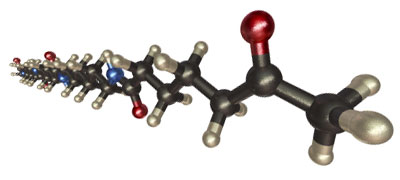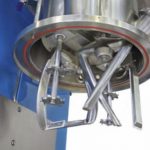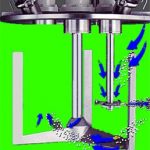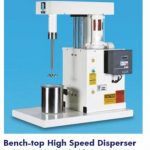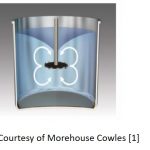So far this dispersion series has covered single shaft dispersers with cowles blades, multi-shaft dispersers, and double planetary mixers. This post will cover two types of hybrid planetary mixers: Powermix Planetary Dual Disperser Mixer (PDDM) The unique feature of hybrid planetary mixers is the combination of at least one high speed dispersing blade and a slower ... [Click to Continue...]
Dispersion of Highly Filled Thermosets – Part Three: Double Planetary Mixers
The last post discussed multi-shaft mixers where the two or three mixing shafts were stationary, and the sweep blade was used to move material off of the sidewalls and into the mixing zone. In the double planetary mixer, the mixing blades rotate on their own shaft (axis) while the shafts rotate around in the mixing vessel on a common axis. The as the blades orbit the mixing ... [Click to Continue...]
Dispersion of Highly Filled Thermosets – Part Three: Multi-Shaft Mixers
The last post described using a single shaft mixer with a cowles blade (as shown above). The single shaft method is good for simple dispersions where in-situ vacuum degassing is not critical. However, if vacuum degassing is required, multi shaft mixers provide an efficient means to disperse fillers under vacuum. Dual-shaft mixers are used to produce a wide range of viscous ... [Click to Continue...]
Dispersion of Highly Filled Thermosets – Part Two: Single Shaft Dispersers
This post will cover the simple case where high shear is required without vacuum degassing. The mixer consists of a single shaft with a Cowles dispersing blade mounted on the end. The image below is from Mixer Direct (Mixer Direct high speed disperser ) In the image above, the mixing vessel is not shown in order to visualize how the dispersing blade would be ... [Click to Continue...]
Dispersion of Highly Filled Thermosets: Part One – Introduction
A previous post touched briefly on dispersion techniques used to incorporate fillers into un-cured thermoset resins. This post is the first in a series covering dispersion techniques. Many commercially available thermoset-based products rely on fillers to provide significant property enhancements. Fumed silica was shown to be a very effective rheology modifier when a yield ... [Click to Continue...]
